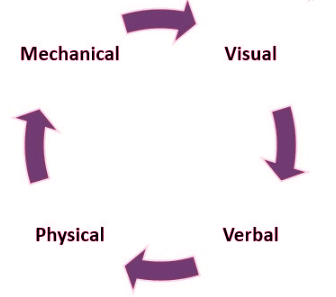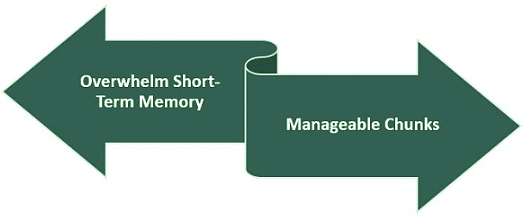Effective Strategies in Guidance Programs | Psychology for UPSC Optional (Notes) PDF Download
| Table of contents |

|
| Introduction |

|
| Meaning of Effective Strategies in Guidance Programs |

|
| Various Guidance Services |

|
| Visual, Verbal, Physical, and Mechanical Guiding Techniques |

|
Introduction
Students often face various challenges throughout their educational journeys, stemming from socio-cultural, pedagogical, psychological, or occupational factors. The guidance program plays a crucial role in equipping students with the necessary tools to overcome these obstacles and develop the independence required for long-term success. However, despite the recognized importance of guidance programs, there is a need to enhance their visibility and implementation. This article explores the meaning of effective strategies in guidance programs, highlighting the various components and services they encompass.

Meaning of Effective Strategies in Guidance Programs
The effectiveness of guidance programs can be hindered by a lack of understanding among employees regarding program design and organization. To overcome this challenge, it is crucial to analyze movement patterns and determine the most effective ways to support students. A comprehensive school counseling program addresses students' academic, occupational, personal, and social difficulties. While not directly instructive, it is an integral part of the educational experience, complementing classroom learning.
Various Guidance Services
A guiding program comprises a range of services that cater to different aspects of students' needs. Let's explore each service in detail:
- Orientation Service: When students transition between schools or educational levels, they often struggle to adjust to new surroundings. Orientation programs play a vital role in familiarizing students with their new environment, facilitating their adaptation and necessary modifications. Starting an educational course or program with an orientation activity sets a positive foundation for students.
- Student Inventory Service: Understanding students' individual characteristics and talents is essential before providing counseling or career guidance. By identifying students' aptitudes, achievements, interests, attitudes, socioeconomic backgrounds, and family histories, educators can better tailor their guidance approaches to meet their specific needs.
- Occupational Information Service: This service involves collaboration between teachers, counselors, and career instructors to provide students with information about educational options, relevant training programs, and available employment opportunities. By introducing students to the world of work and the skills required for specific professions, they gain insight into various career paths and make informed decisions.
- Counseling Service: Considered the most critical component of guidance programs, counseling aims to support students in their overall development. Through one-on-one sessions with professional counselors, students can discuss their plans, challenges, and aspirations in a supportive environment. While counselors are primarily responsible for providing this service, teachers can also offer support by identifying and referring students who may benefit from counseling.
- Placement Service: The placement service focuses on assisting students who are still in school or have graduated in finding suitable job opportunities. This service may involve dedicated placement professionals or collaboration with other guidance staff members to connect students with employment opportunities. It is particularly important for secondary and higher secondary school students.
- Follow-up Service: To ensure continuous growth and development, it is crucial to monitor students' progress even after they leave school. Follow-up services involve evaluating not only vocational factors but also emotional and social adaptations. By understanding how students have progressed in their post-school lives, educators can assess the effectiveness of the guidance program and identify areas for improvement.
Visual, Verbal, Physical, and Mechanical Guiding Techniques
To effectively engage students in the learning process, various guiding techniques can be employed. These techniques leverage different sensory modalities and include:
- Directionality via the Eyes: This technique involves modeling the necessary procedures for students to observe. It utilizes visual aids such as videos, charts, and books to create mental images and demonstrate expected outcomes. It can also help emphasize areas of improvement and encourage accurate replication of demonstrations through multiple viewpoints.
- Instructions Given Orally: Detailed verbal descriptions guide students through specific activities. Visual aids are recommended to enhance understanding and create mental imagery. Advanced performers can be taught new strategies using this technique, particularly in conditioning and fitness-related fields. For example, a basketball player practicing a layup can be instructed to "drive to the basket" to encourage correct execution.

- Instruction by Hand: Physical contact is employed in this technique, such as providing support to a gymnast on a vault or guiding their body during a headstand. Direct physical guidance helps reduce risk, boost self-assurance, develop kinesthetic awareness, alleviate anxiety, and simplify complex movements. However, caution must be exercised to avoid over-reliance on physical assistance and the development of incorrect habits.
- Help from Machines: Mechanical guiding techniques involve the use of auxiliary aids, such as swimming armbands or trampoline harnesses, to enhance skill acquisition. These aids enhance safety, build confidence, and expedite familiarity with the skill. Mechanical guiding also promotes inclusion for disabled athletes. However, it is important to be mindful of potential overdependence on mechanical aids and the possibility of creating false positives in skill execution.
Conclusion
To create effective guidance programs, it is essential to customize tasks to accommodate students' needs and encourage them to find innovative solutions. Shifting the focus from grades to learning and inquiry fosters authentic decision-making and a sense of ownership. Educators can set an example as "lead learners" and facilitate learning opportunities. Encouraging students to participate in classroom and team-building activities, as well as embracing intercultural education and inclusive teaching strategies, further enriches the learning experience for all students.
|
160 videos|215 docs
|














